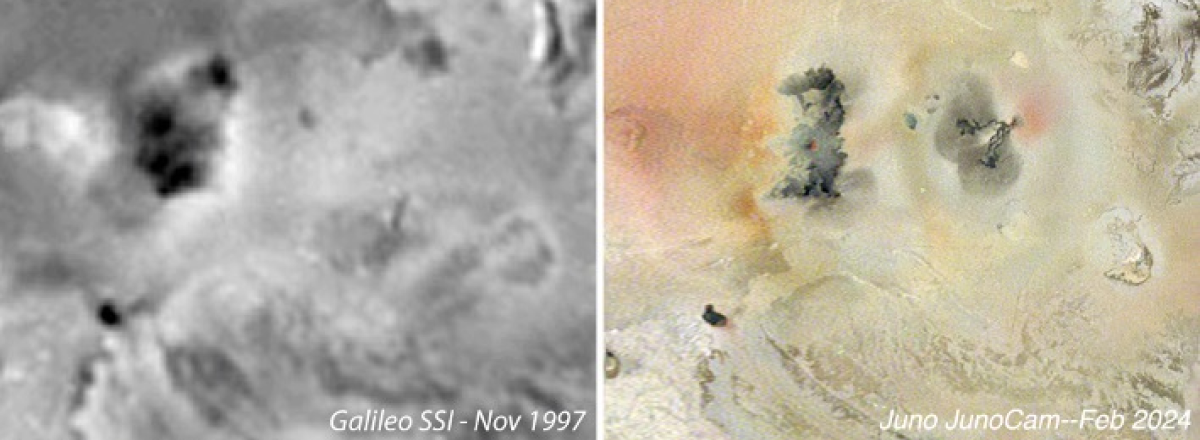NASA’s Juno Discovers Massive New Volcano on Jupiter's Moon Io
This discovery was made by comparing recent images taken by Juno in February 2024 with older images from NASA’s Galileo spacecraft, captured over 25 years ago in 1997.

NASA’s Juno spacecraft has identified a massive new active volcano on Jupiter's moon Io, the solar system's most volcanic body. This discovery was made by comparing recent images taken by Juno in February 2024 with older images from NASA’s Galileo spacecraft, captured over 25 years ago in 1997.
The images, taken during Juno's flyby on the moon's nightside, illuminated by reflected light from Jupiter, revealed a large volcanic feature that had not been present in earlier photos. The newly discovered volcano features red-stained areas, likely sulfur ejected into space and later deposited on Io's surface. Additionally, two dark lava flows, stretching about 100 kilometers, were observed alongside grey deposits.
The discovery highlights the intense volcanic activity on Io, a moon slightly larger than Earth's, which experiences constant geological upheaval due to the gravitational forces from Jupiter and its neighboring moons, Europa and Ganymede. These forces create frictional heat within Io, fueling its volcanic eruptions.
Juno, launched in 2011 and orbiting Jupiter since 2016, continues its extended mission until September 2025, providing invaluable insights into Jupiter and its moons.

